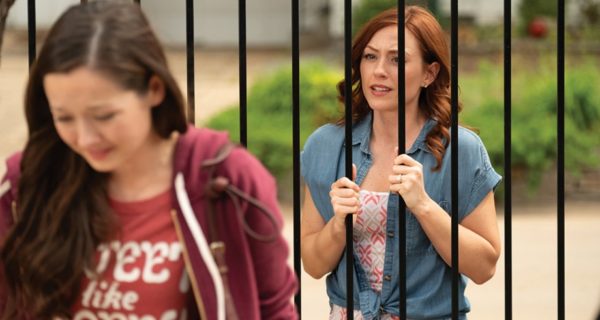I’m sitting in my car, having just walked out of the theater after seeing Unplanned. I decided to write this review now, before I turn on my music, before I drive 20 minutes home to my dogs, before answering any of the messages on my phone, because it’s important to me that you get my first impression.
As you may already know, Unplanned is the story of Abby Johnson. She worked at Planned Parenthood for years, rising in prominence until she became the youngest clinic director in the company’s history. She was honored as their Employee of the Year. She had a husband and a daughter and what probably seemed to others as the perfect life. But, as the promotions say, what she saw changed everything.
Abby believed strongly that she was helping women and girls who came to her clinic. Her goal – unlike that of her company – was to lower the number of abortions for, as she says in the movie, no one wants to have an abortion. But she thought that it was sometimes necessary due to circumstances. She sold abortions because she didn’t accept that these fetuses that were terminated were babies, but thought of them as tissue only. This made the idea easier to swallow for everyone, patient and staff alike. As the terminator of two pregnancies of her own, and having carried another child to term, Abby was in the unique position to sympathize with the women and girls who came into her clinic, to prey on their fears and tell them that they were doing the right thing.
The movie was given an R rating for disturbing/bloody images. Personally, I found the medical scenes in Doctor Strange more disturbing. Yes, there is blood in Unplanned, but nothing beyond that which comes from abortion procedures. We see Abby as she goes through a surgical abortion in a clinic and a chemical abortion (taking abortive pills) at home, the latter resulting in a floor covered in blood and tissue. We see another girl with blood running down to her ankles after her surgical abortion. There is blood on Abby’s shoes after a long day. Abortion is a bloody business, a fact that was handled with as much grace and tact as possible without hiding the truth.
While there is an occasional swear word, I can’t remember any other than H**l. There is no nudity – even when Abby is going through the horrible ordeal of the chemical abortion in her own bathroom, she is wearing an oversized shirt and is covered more than most female beach-goers. There is no violence directed toward post-natal children, and very little violence directed to adults – some verbal bullying, some mentions of threats and some throwing of cruel-but-true facts in the faces of people who needed care and concern. The most violence shown is in one of the first scenes, where we see a surgical abortion from Abby’s viewpoint as an assistant, viewing most of it from an ultrasound monitor. But, again, all this is done as tastefully and tactfully as possible.
All in all, it was the exposition of horrors in a very gentle manner, considering the subject.
Now, what did Abby see? She saw that ultrasound, that baby fighting for its life as it was pulled apart by a vacuum. And through the magic of today’s movie technology, we see it too, without causing harming any unborn children. Abby saw the truth – the unborn are alive, they are human, and they deserve to live. Pregnant women deserve better than being manipulated into killing their unborn children. Abby saw the hypocrisy, the lies, the horror. And she’s been doing all she can to prevent that horror ever since.
I highly recommend this movie. Whether you are pro-choice or pro-life or uncommitted to either side, you deserve to see what Abby saw. Bring tissues, particularly if you are a parent. But go and see it. Let anyone old enough to participate in abortion see it. And maybe the truth will set us free as it did for Abby.

Beautifully and truthfully written!